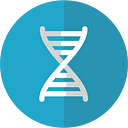Bioscience and Healthcare Megatrends that Startups Cannot Ignore
Does your startup ride a megatrend? When evaluating a bioscience startup, my first filter is often whether that aspiring business will exploit one of the megatrends sweeping through the bioscience and healthcare sector.
Startups riding on megatrends have a much bigger target to aim at. They also stand a hugely better chance of success if they are going with a big and relentless long-term trend — as John F. Kennedy often remarked, “a rising tide lifts all boats”. In this article, I will list and describe briefly those megatrends that I believe are most relevant for bioscience and healthcare startups. I will concentrate on trends that fundamentally affect how patients are diagnosed or treated, or how diseases are prevented in the first place. In particular, each trend should be a positive driver of demand for relevant products and services. Such a trend then qualifies as “mega” when it is both major and relentless over the medium-to-long term. “Major” implies a big impact on outcomes and/or costs for a substantial number of patients, clinicians, researchers and/or payers. “Relentless” implies not just a short-term phenomenon but one continuing unswervingly for some years to come — my rule of thumb for a relentless trend is that its growth curve over time (see conceptual diagram below) does not begin to flatten out for at least another 7 to 10 years.
About Megatrends
I will concentrate here on trends that fundamentally affect how patients are diagnosed or treated, or how diseases are prevented in the first place. In particular, each trend should be a positive driver of demand for relevant products and services. Such a trend then qualifies as “mega” when it is both major and relentless over the medium-to-long term. “Major” implies a big impact on outcomes and/or costs for a substantial number of patients, clinicians, researchers and/or payers. “Relentless” implies not just a short-term phenomenon but one continuing unswervingly for some years to come — my rule of thumb for a relentless trend is that its growth curve over time (see conceptual diagram below) does not begin to flatten out for at least another 7 to 10 years.
Most of the megatrends outlined in this article are well-established and “happening now” — they are already in the steep part of their S-curve. I will also be mentioning a couple that are emerging — they have been bubbling over for a while but are now starting to accelerate. The list of megatrends I outline below are certainly not exhaustive, but I am confident that most young companies making good progress in both their fund raising and in their commercial development are riding on at least one of these megatrends, if not several!
Established Megatrends
The established bioscience and healthcare megatrends I refer to when assessing startups are:
- Ageing Population & Healthcare Resource Optimization.
- Healthcare Consumerism & Patient Centricity.
- Networked R&D & Partnerships.
- Precision Medicine & Biomarkers.
- Advanced Therapeutic Modalities.
Ageing Population in many countries worldwide puts pressure on healthcare payers. who in consequence put a lot of focus on Healthcare Resource Optimization initiatives. Payers have to incur increasingly higher per capita costs for a higher proportion of older and retired people, funded by social security contributions or insurance premiums from a proportionately shrinking younger working population.
Healthcare Consumerism refers to the tendency for an individual to proactively seek information for making better-informed decisions about their healthcare options. This phenomenon has been fueled by higher education levels and pervasive access to health information via the internet. Many patients and their loved ones increasingly want to be more involved in the day-to-day management of their disease. And they are not shy to communicate on social media their healthcare experiences. In response, many healthcare organizations and biomedical innovators are designing Patient Centric solutions i.e. products and services that take significant account of the patient’s personal needs and perceptions, not just the requirements of their physician and payer.
Up to and including the 1990s, the vast proportion of biomedical R&D activity was concentrated in the large centralized R&D organizations of big pharmaceutical and medical equipment multinationals. Over the past two decades, the biomedical industry has learnt the hard way that the probability of any one research organization spawning an innovation that eventually becomes a marketed product is not correlated to the size of that organization. In other words, bigger R&D organizations do not necessarily mean more innovations, whereas the higher the number of separate research organizations, the greater the number of viable innovations generated. Networked R&D has now emerged as the dominant biomedical industry paradigm — the majority of new innovations are ideated by tens of thousands of small & medium-sized enterprises (SMEs) including academic units/spinouts, and then developed further and subsequently commercialized via partnerships with larger pharmaceutical and medical equipment multinationals. Of the 57 new molecular entities approved by the FDA in 2018, only 13 (23%) originated in the laboratories of the large pharmaceutical companies.
In Precision Medicine, highly efficacious new therapeutics and treatment regimens with very high patient response rates are developed for small narrowly-specified patient sub-populations. These sub-populations are defined (“stratified”) using biomarkers based on a combination of omics data and sophisticated imaging and digital technologies that capture each patient’s unique characteristics. In addition to the patients and physicians who benefit, payers are also keen to concentrate their reimbursement for expensive novel therapeutics on patients where these innovations have highest impact.
Last but not least, the first instances of some exciting new Advanced Therapeutic Modalities are beginning to reach the market, with many more regulatory approvals expected over the next decade and beyond. Cell & gene, mRNA, RNAi, microbial, electroceutic and digital therapeutics all promise to supplement or supplant traditional small molecule and antibody drugs for certain medical indications and patient populations. For many of these new modalities, there are challenges being faced (and hence entrepreneurial opportunities) to not only develop a specific therapeutic, but also to reliably, efficiently and safely manufacture and deliver that therapeutic.
The astute reader will notice I have not included digital health in the list above. Many would argue that this is the hottest startup trend right now, judging by the constant stream of digital health-related articles on industry media outlets and the growing number of venture capital funds claiming an interest in digital health. From my perspective however, I see the application of big data, smartphones, digitized hardware, machine learning algorithms and suchlike as an enabler in all five megatrends listed above. Digital health is the means to an end, rather than an end in itself — it is not a fundamental demand driver in the same way that the megatrends listed above are. Just because a company deploys a smartphone app or an artificial intelligence software platform does not per se mean it addresses major unmet needs in, for example, healthcare resource optimisation or precision medicine. Nevertheless, it will become apparent that in many of the examples I will subsequently quote in future articles of this series, digital health is a key enabling tool.
Any one of the above megatrends could drive the core rationale for a particular company’s business model. Furthermore, there will be companies operating at the intersection of two or more of these megatrends — think of them as riding on spring tides! For example, in chronic diseases, instead of discovering new drugs, there are startups (such as UK-based Closed Loop Medicine) developing physician-supervised treatment regimens that optimize the combination and dosing of multiple proven drugs and new digital therapeutics according to each patient’s unique characteristics and how their disease progresses over time. In this particular example, the business operates at the intersection of three megatrends, namely Healthcare Resource Optimization, Patient Centricity and Precision Medicine.
Emerging Megatrends
In addition to the established megatrends, I also see at least two emerging megatrends whose growth gradient is starting to accelerate:
- Synthetic Biology for Sustainability.
- Public Health and Anti-Infectives.
A rapidly emerging field is Synthetic Biology i.e. applying sophisticated biotechnology tools and techniques to engineer real world solutions for industry and everyday life, not just in healthcare. In particular, as the world seeks to implement a more environmentally-friendly and sustainable way of working and living, biotechnology will make a huge contribution in many areas outside healthcare, not just in obvious areas like biofuels but also further afield, for example in clothing and the fashion industry.
Many Public Health professionals have been getting increasingly concerned about the antibiotic resistance crisis but progress to mitigate has been slow owing to many barriers along the way, including the lack of appropriate incentives for innovating new antibiotics. One of the few positive aspects of the Covid-19 pandemic sweeping across the globe at time of writing is that it will almost certainly lead to a resurgence of interest and funding (both public and private) for innovations in anti-infectives, viral diagnostics, vaccines plus other mechanisms/tools for transformative public health management.
Key Takeaways
If your business idea rides a megatrend, you have a bigger prize to aim at. And more importantly, since your underlying market is consistently growing, you also gain a lot more leeway to survive the inevitable potholes and misadventures in your journey to develop your business. Fortunately, there are several clear and established megatrends that bioscience and healthcare entrepreneurs can ride on.

